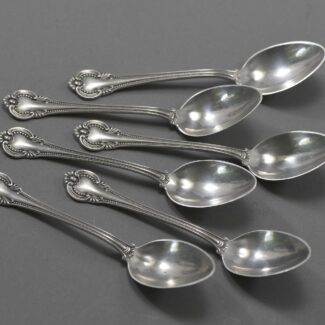Artist: David Roberts (Scottish, 1794-1864)
Engraver: Louis Haghe (British, 1806-1885)
Publisher: Rev George Croly (British, 1780-1860)
Plate 7 ‘Siout, Upper Egypt’
Volume 1, ‘The Holy Land, Syria, Idumea, Arabia, Egypt and Nubia’ (1847)
Lithograph, Hand-Coloured
Sight: 9” high x 13” wide
Framed: 23” high x 29 ½” wide
Description: Small-Folio, hand-coloured lithograph titled ‘Siout, Upper Egypt’, the original drawn by Scottish artist David Roberts (1794-1864) Royal Academy, and transposed to lithograph by Louis Haghe (1806-1885) and published in The Holy Land, Egypt and Nubia, Volume I, 1847. “ In 1853, unsold sets of Roberts’ lithographs were put up at auction, “and the stones from which the prints had been worked were ALL DESTROYED in the Rooms during the progress of the sale” (Abbey, 340-41). Tooley 401. Abbey 385.” (Bauman)
Notes on Siout from David Roberts Journal: “Formerly Lycopolis – a name derived from the worship of the jackal, one of the mythological menagerie of the ancient Egyptians. There is a tradition, however, which gives great interest to this place in Christian history, as the resting-place of Joseph and Mary when they fled into Egypt, with the infant Saviour, from the persecution of Herod.
Siout is situated on the western side of the Nile, about a mile and a half from the river, and about midway between it and the Libyan hills, in which are numerous caves and tombs o the ancient inhabitants. The town itself, surrounded by luxuriant fields and gardens, lies above the level of high Nile. During the inundation the country around is flooded, and the approach to the town is by a dyke, or embankment, connected with a bridge of many arches: the approach by the picturesque ruins of a mosque is striking. The present town, one of the largest above Cairo, is comparatively modern, and contains 20m000 inhabitants; the streets are wider and the houses better built than in most of the town of Egypt: it has numerous minarets and a palace of the Pahsa.
Siout contains about one thousand Christians, and is the see of a Coptic bishop. It is a place of some commercial importance as a point of communication on the Nile with the caravan of Sennaar, the emporium of slaves and the merchandize of Abyssinia. The caves of ancient Lycoplis furnish a great supply of mummies; and fragments of bodies and pieces of cere-cloth attest the unfeeling rapacity for violating the tombs, which the ready market offered by mummy-hunters has engendered.”
Markings: titled in lithograph lower left, ‘Siout, Upper Egypt’; signed in litho. Lower right, ‘David Roberts. R.A. – L. Haghe Litho.’
Sight: 9” high x 13” wide
Framed: 23” high x 29 ½” wide
Condition: Very Good Vintage Condition – Ready for Display.
For Accuracy Only: there may be a couple of light fox spots around the margins. The colours are bright with no fading. Uninspected out of frame.
Reference: Abbey; Tooley
Artist/Maker Biography: Roberts was the first independent, professional British artist to travel extensively in the Near East. His tour in 1838-9 produced 272 sketches, a panorama of Cairo and three full sketchbooks, enough material to “serve me for the rest of my life” (Roberts, eastern journal, 28 Jan 1839). Over the next decade he made “a series of intire new drawings” for the large coloured lithographs executed by Louis Haghe for The Holy Land, Syria, Idumea, Arabia, Egypt & Nubia, which was originally published by subscription, 1842-9. No publication before this had presented so comprehensive a series of views of the monuments, landscape, and people of the Near East. “Robert’s Holy Land was one of the most important and elaborate ventures of nineteenth-century publishing, and it was the apotheosis of the tinted lithograph” (Abbey, Travel). These lithographs were originally published in twenty parts, most parts containing six plates, the price for each part with coloured plates (the most expensive state) being 3 guineas.














